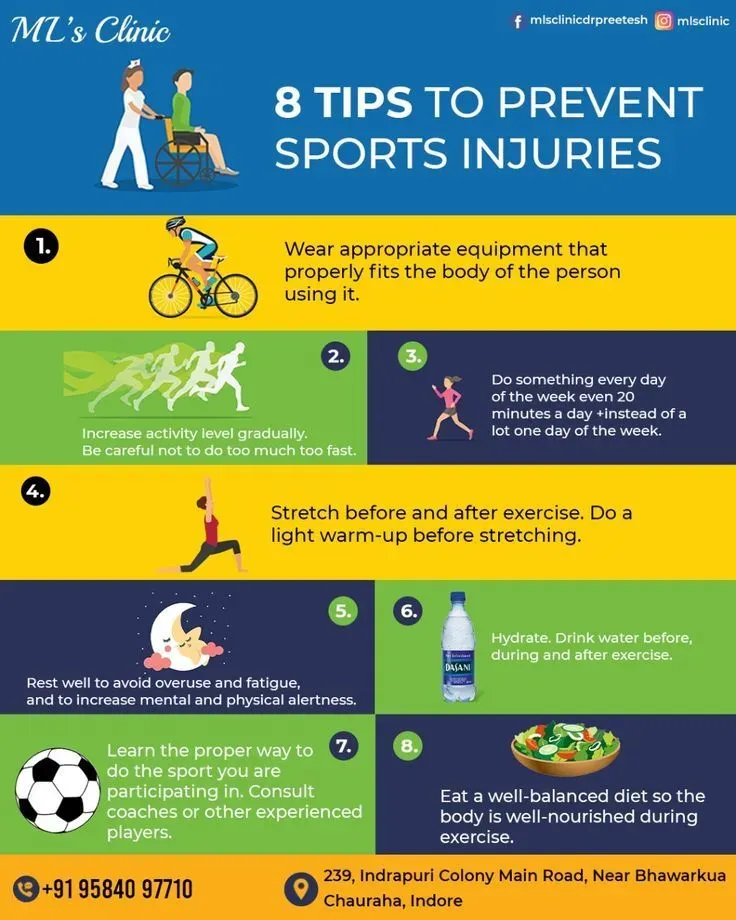Injury prevention in sports is more than a slogan; it’s a comprehensive framework that blends preparation, technique, recovery, and data-driven adjustments to keep athletes healthy and performing at their best. Smart, safe training plans guide how and when to increase load, helping athletes progress without tipping into risky spikes. These sports injury prevention strategies emphasize movement quality, gradual overload, and structured warm-ups while aligning training and recovery for athletes. A focus on injury prevention exercises builds resilient muscles and joints, and engrains durable movement patterns that support performance. Integrated athlete recovery protocols, nutrient timing, sleep, and monitoring of fatigue complete the loop so gains stick and downtime stays minimal.
Beyond checklists, practitioners frame this focus as preventive conditioning and risk management designed to build durable performance over a season. By emphasizing movement quality, progressive load, and sport-specific preparation, clubs create athletes who stay healthy, train consistently, and perform at a high level. Prehabilitation, mobility work, and recovery-aware scheduling address weak links before they become injuries, keeping players fresh for key competitions. Load monitoring, functional screening, individualized planning, and a culture of prevention reinforce safety without compromising results.
Injury prevention in sports: A holistic foundation for durability and performance
Injury prevention in sports is not a slogan; it’s a system that blends preparation, technique, recovery, and data-driven adjustments to keep athletes healthy and performing at their best. Injuries often reflect training load, fatigue, technique flaws, and insufficient recovery, not random accidents. By focusing on modifiable factors, teams can design programs that reduce risk while maintaining performance.
A holistic approach requires collaboration among athletes, coaches, and medical staff, delivering safe training plans and athlete recovery protocols that balance training and recovery for athletes, stress management, and ongoing evaluation. With consistent monitoring and adjustment, the same framework translates into fewer downtime periods, steadier progress, and a culture that prioritizes long-term health.
Safe training plans: Building a foundation for durable performance
Safe training plans provide the backbone for gradual, durable adaptations. They use periodization, variability, and built-in recovery windows to balance stress and rest, helping athletes progress without overloading tissues.
A solid plan emphasizes progressive overload, structured warm-ups and mobility, targeted strength work, and proprioception. By sequencing these elements, teams shield joints, ligaments, and the kinetic chain from common injury mechanisms and support performance during competition and training.
Movement quality and load management for athlete safety
Movement quality and load management are essential partners for safe practice and competition. High-quality movement reduces the risk of ACL injuries, ankle sprains, and shoulder issues, while prudent load management keeps tissue fatigue from reaching a tipping point.
Tools such as readiness tracking, periodic movement screenings, and sport-specific technique coaching help keep workloads in check and form in balance. Visual feedback, performance tests, and video review support tailored workloads and timely rehabilitation when needed.
Recovery-first strategies: Optimizing athlete recovery protocols
Recovery-first strategies treat rest as a performance asset. Comprehensive athlete recovery protocols support tissue repair, hormonal balance, and cognitive readiness, reducing fatigue and the risk of overuse injuries that derail seasons.
Key components include sleep optimization, nutrition and hydration, and active recovery sessions that promote blood flow without adding unnecessary fatigue. Monitoring fatigue, soreness, and overall well-being guides adjustments to training load and helps prevent a breakthrough injury.
Injury prevention exercises that work: Practical routines for every athlete
Injury prevention exercises provide a practical bridge between theory and action. A focused routine targets ankle stability, hip strength, hamstring resilience, core stability, and shoulder girdle endurance, forming durable movement patterns that support sport demands.
Many routines can fit into warm-ups or stand-alone sessions, typically 20-30 minutes, two to three times per week. Consistency matters more than perfection; gradual progression and correct technique help athletes see meaningful reductions in injury risk.
Education, culture, and ongoing assessment: Embedding prevention into daily training
Education and culture are essential for sustainable change in sports injury prevention strategies. When athletes understand why warm-ups, recovery, and reporting fatigue cues matter, compliance improves and risk factors are caught early.
Regular screenings, data-informed planning, and a repeatable weekly routine embed prevention into daily training, creating accountability and continuous improvement. By aligning prevention with team goals, leadership, and ongoing education, programs become a standard part of performance development.
Frequently Asked Questions
What is injury prevention in sports and why are safe training plans essential?
Injury prevention in sports is a holistic approach to reduce risk by preparing the body for sport demands, optimizing technique, and ensuring adequate recovery. Safe training plans guide progression with periodization, structured warm-ups, strength work, balance, and load monitoring, helping athletes accumulate training stress without breaking down.
What are the most effective sports injury prevention strategies across training and competition?
Effective sports injury prevention strategies include progressive overload within safe training plans, structured warm-ups with mobility, targeted injury prevention exercises, balance and proprioception work, movement quality assessment, and ongoing education to build a culture of prevention.
How can training and recovery for athletes be optimized to reduce injury risk in sports?
Optimize training and recovery for athletes by baselining mobility and strength, using periodized plans, and scheduling recovery windows. Focus on sleep, nutrition, hydration, and active recovery, plus fatigue monitoring to adjust load before injuries occur.
Which injury prevention exercises should athletes regularly perform to reduce common injuries?
A practical routine includes ankle stability work, hip mobility and strength, hamstring and posterior chain resilience, core and thoracic stability, and shoulder girdle endurance. These injury prevention exercises build durable movement patterns.
How do athlete recovery protocols influence injury prevention in sports during busy seasons?
Athlete recovery protocols reduce fatigue accumulation and tissue strain, lowering overuse injury risk. Emphasize sleep, nutrition, hydration, light recovery sessions, and fatigue monitoring to adapt training loads.
What is a practical weekly plan that teams can implement for injury prevention in sports?
Create a weekly cadence that includes a structured warm-up, a short injury-prevention circuit, safe training plans with progressive load, and a robust recovery protocol after each session. Include baseline screenings, load monitoring, and accountability to ensure consistent application.
| Section | Key Points |
|---|---|
| Introduction |
|
| Safe Training Plans: Building a Strong Foundation |
|
| Recovery as a Priority: Let the Body Repair and Adapt |
|
| Injury Prevention Strategies Across Training and Competition |
|
| Concrete Injury Prevention Exercises for Everyday Use |
|
| Putting It All Together: Creating a Practical Plan for Teams and Individuals |
|
| Conclusion |
|
Summary
Injury prevention in sports: a descriptive conclusion that ties together safe training plans, recovery, and practical strategies to sustain performance and reduce injuries.



